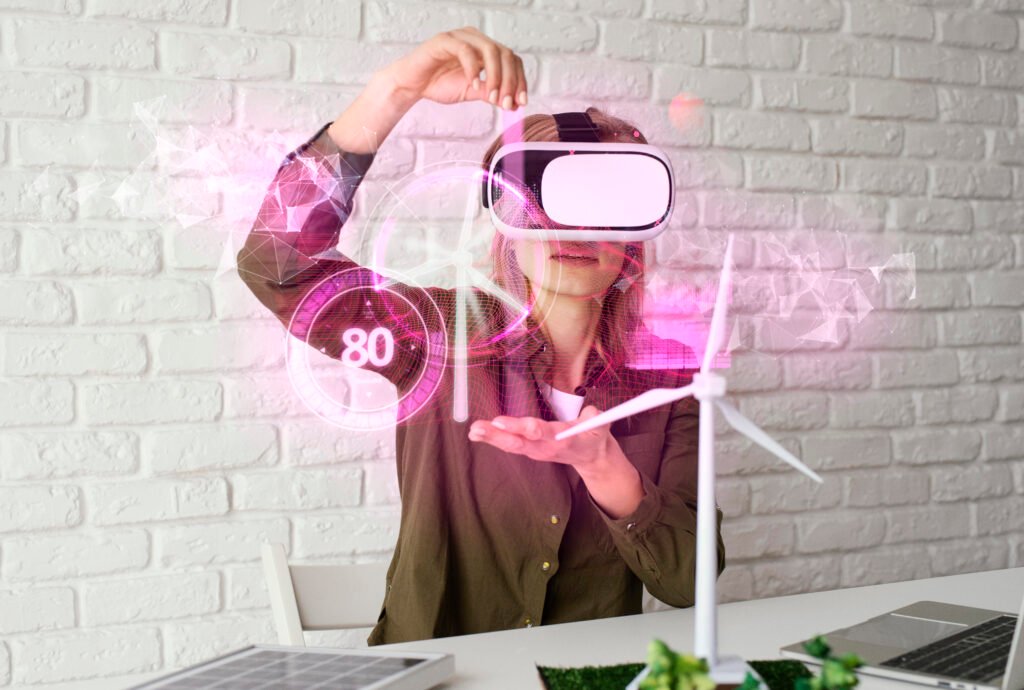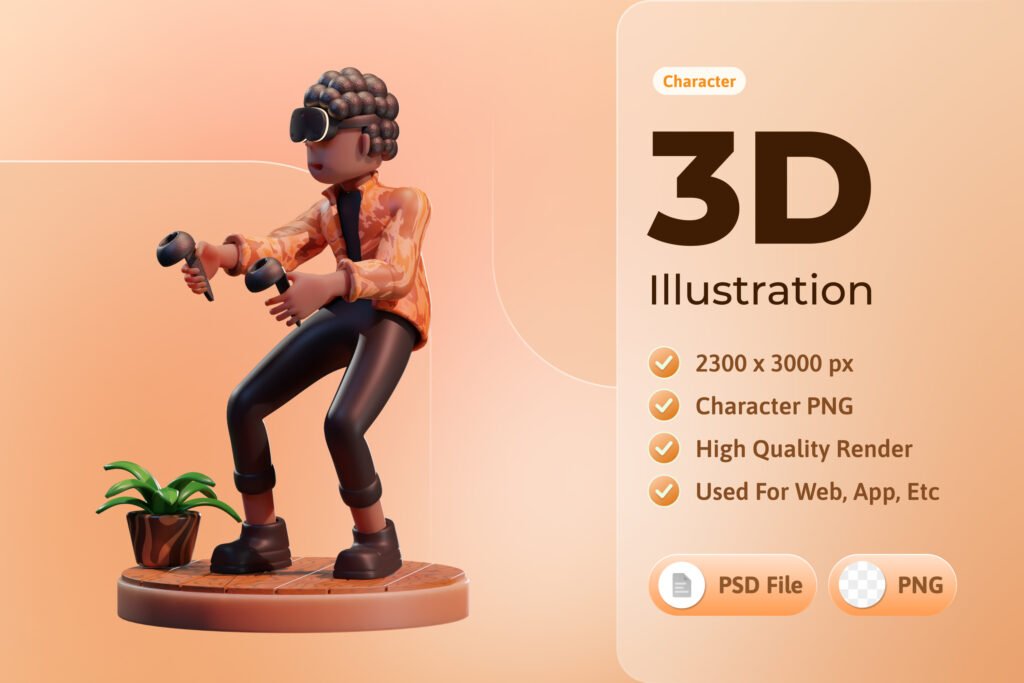
Augmented Reality Framework is really making waves in our fast-evolving world, connecting the physical and digital realms. The integration of AR shows how tech is moving forward, opening up tons of exciting possibilities to transform industry experiences.
For tech enthusiasts, devs, and marketers, digging into AR’s core and intricate frameworks isn’t just important—it’s vital. This knowledge lays the groundwork for progress and sparks innovation, potentially reshaping entire sectors.
This deep dive aims to walk you through Augmented Reality framework, starting from basics to cutting-edge apps. Dive in to arm yourself with the know-how to unleash AR’s potential in your creative and business ventures!
Introduction
Augmented reality (AR) stands as an advanced technology seamlessly integrating digital information like images, videos, and data overlays into the user’s physical environment. This digital content overlays the real world in real-time, enriching the user’s reality perception through a device. In comparison to virtual reality, which immerses users in a completely digital world, AR enriches the real world by superimposing relevant digital elements, delivering a unique and interactive user experience that effectively merges the digital and physical realms.
Please read Augmented Reality Scope and Benefits
What Is AR
Understanding AR is to know its early roots in flight simulation technology, which allowed pilots to practice in a safe and controlled environment. AR has since spread its wings, with consumer-facing applications like mobile games that integrate digital characters into real-world settings (think Pokémon Go), to facilitating complex tasks in industrial settings, such as assembly line assistance.
Importance and Current Applications
AR’s potential to enhance user engagement, provide contextually relevant information, and even reshape how we perceive the physical environment makes it a technology with significant implications. Already, AR is making inroads in fields ranging from architecture and medicine to tourism and retail, with uses as diverse as providing virtual fitting rooms for online shopping to aiding in complex surgeries with real-time guidance.
Core Components of an AR Framework
An Augmented Reality (AR) framework forms the backbone for creating captivating AR experiences. This advanced framework combines hardware and software components to seamlessly blend the real world with the digital realm. By intricately integrating these elements, users are immersed in an environment that blurs reality and virtuality, offering endless possibilities for interactive engagement.
Industry standards for AR are still evolving, but organizations like the Open AR Cloud are working towards open standards for AR data representation and services.
Hardware Requirements
The type of AR experience and its quality are often tethered to the hardware capabilities. Cameras, sensors, and displays are the crucial trifecta that enables AR. However, as AR innovations continue to push the envelope, headsets with specialized optics and positions tracking have emerged as the forefront of AR hardware.
Software Essentials
The backbone of AR software consists of platforms, operating systems, and tools that facilitate AR app development.
- AR platforms and operating systems serve as the bridge between hardware and software, providing the necessary runtime for AR applications.
- Development Kits and APIs offer a catalogue of functions and resources that developers can leverage to build AR features. These include detecting planes, anchors, and creating objects and gestures within the AR setting.
- Rendering engines are vital for creating the 3D images that blend with real-world views, ensuring a high-quality visual experience.
Designing an AR Experience
Designing for AR extends beyond traditional UX concerns to spatial and contextual considerations. The user’s physical environment is as important as their digital experience.
User Experience (UX) in AR
UX in AR concerns the entire user interaction, from environment scanning to interactivity. Intuitive design takes center stage to ensure that users can seamlessly interact with the digital elements in their real-life context.
Spatial Mapping and Object Recognition
For AR to function effectively, it needs to understand and map the user’s environment. Object recognition enables the software to identify and track physical objects within the AR view, contributing to a more robust interaction.
Intuitive User Interfaces
An AR interface must guide users and respond naturally to their movements. Gestures, voice commands, and even touchless controls need to be designed with the user’s comfort and efficiency in mind.
AR Content Creation
At the heart of every augmented reality (AR) experience lies content, encompassing a myriad of elements that users can interact with and explore. This content comprises intricate 3D models, captivating animations, and a diverse range of multimedia assets, all working together to create immersive and engaging AR encounters.
Creating 3D Models and Animations

Developing 3D assets for Augmented Reality (AR) involves a significant shift in perspective when compared to traditional 3D modeling practices. For AR applications, it’s crucial that these models strike a balance between being lightweight to ensure optimal performance and visually appealing to captivate user engagement. This delicate balance between performance and aesthetics is key in creating immersive AR experiences that resonate with users.
Integrative Multimedia Assets
Incorporating additional media such as audio, haptic feedback, and interactive visuals can greatly enhance the user experience, providing a multi-sensory richness that captivates users on a deeper level and elevates overall engagement with the content.
AR Framework Development
Developing with AR (Augmented Reality) frameworks requires a combination of various programming languages such as C#, C++, or JavaScript, along with specialized tools like Unity or Unreal Engine. It also involves following industry best practices to create immersive and interactive AR experiences that captivate users.
Development Languages
Common programming languages for AR framework development include C#, Java, C++ and Python, depending on the platform and tools used.
Languages like Swift, Java, or UnityScript are commonly used for AR app development, each offering unique advantages and tailored ecosystems that cater to different aspects of augmented reality creation. Developers often choose the language that aligns best with their project requirements, considering factors such as performance, compatibility, and community support.
SDKs for AR Development
Frameworks such as ARKit for iOS and ARCore for Android have become synonymous with mobile Augmented Reality (AR) development. They provide developers with robust tools, extensive documentation, and vibrant community support, enabling the creation of immersive AR experiences that push the boundaries of innovation in the mobile space.
Open-Source vs. Proprietary Solutions
When deciding between open-source and proprietary solutions, it’s crucial to ensure that the choice aligns with the specific project requirements and overarching business strategy. Open-source options offer flexibility and community support, while proprietary solutions may provide tailored features and dedicated support services. By carefully evaluating the needs of the project and aligning them with the long-term business goals, organizations can make informed decisions that drive success and efficiency.
Challenges in AR Framework Development
Though AR holds immense potential, development is not without its challenges.
Technical Challenges and Limitations
From accurate spatial tracking to occlusion — the ability to have virtual objects interact with real ones — ensuring consistent performance presents technical hurdles.
Addressing Privacy and Security Concerns
AR’s access to sensitive data about the environment and potentially sensitive user information necessitates robust privacy and security measures.
Future of Augmented Reality Framework
The future of Augmented Reality (AR) is bursting with promise and excitement! Imagine AR clouds, storing and sharing AR content for seamless access, creating shared AR environments for real-time collaboration, and wearable AR tech seamlessly blending into everyday accessories like glasses and watches. These innovations, once considered futuristic, are now becoming the norm, reshaping how we interact with the digital world and our physical surroundings. Augmented Reality is set to revolutionize diverse industries, from education to entertainment, enhancing everyday experiences. Get ready for a future where digital and physical realities blend seamlessly to enrich our lives!
Innovations on the Horizon
New sensor technologies, coupled with recent advancements in artificial intelligence, and deeper integration with the Internet of Things (IoT), are collectively driving the evolution of augmented reality (AR) experiences. These innovations are reshaping how we interact with digital information in our physical surroundings, promising more immersive and interactive user experiences in various domains such as education, healthcare, and entertainment.
Potential Impacts on Industry and Society
Augmented Reality (AR) has the transformative potential to redefine and elevate experiences within a multitude of industries. Its impact resonates in realms such as revolutionizing educational methods through immersive learning experiences and enhancing collaboration in remote work settings by enabling more interactive and engaging virtual interactions.
Top 5 Augmented Reality Frameworks for App Development
- ARKit and RealityKit (Apple) – ARKit and RealityKit by Apple are renowned for their seamless integration with iOS, ensuring smooth AR experiences along with robust device optimization that enhances performance.
- ARCore (Google) – ARCore from Google stands out for its provision of cross-platform AR experiences, enabling users to enjoy augmented reality on various devices running Android while offering strong integration features.
- Vuforia (PTC) – Vuforia, a product of PTC, is a prominent player in industrial AR, excelling in robust tracking and recognition capabilities that cater specifically to industrial applications, making it a top choice for businesses in need of advanced AR solutions.
- Wikitude – Wikitude is recognized for its geolocation AR features, providing users with immersive experiences that blend the virtual world with real-world locations, supported by an extensive range of development tools to create engaging AR content.
- Unity 3D with AR Foundation – Unity 3D combined with AR Foundation offers a comprehensive ecosystem tailored for AR game development, enabling developers to create interactive and immersive AR experiences across multiple platforms with ease and flexibility.
Conclusion
The Augmented Reality framework we’ve discussed here are not just tools for developers; they’re the canvases and brushes of a new digital renaissance. By understanding the depths of AR development, you stand ready to mold experiences that can captivate, educate, and innovate. The applications of augmented reality are yet to be fully realized, and with each technological leap, we move a step closer to a world where the boundaries of our imagination are the only limits to what we can achieve.
In the grand theater of technologic evolution, AR frameworks are the stagehands, the artists, and the architects. Through our collective efforts in mastering these frameworks, we not only behold the present of AR but also wield a hand in directing its future. The curtain is rising for you to play your part in this magnificent saga of human ingenuity and digital advancement.
Share to
Frequently Asked Questions (FAQ)
An augmented reality framework is a collection of tools, libraries, and APIs that allows developers to design, develop, and deploy augmented reality applications.
: Many AR frameworks come with user-friendly interfaces that help beginners and non-developers create simple AR experiences; however, advanced applications typically require programming knowledge.
Some popular AR frameworks include Apple’s ARKit for iOS, Google’s ARCore for Android, Microsoft’s Mixed Reality Toolkit, and Unity’s AR Foundation for cross-platform development.
Related Posts

7 Best Social Media AI Tools in 2024
Explore innovative solutions in latest social media AI tools designed to transform your online presence, streamline content creation, and optimize engagement.

Artificial Intelligence Algorithms
Artificial Intelligence algorithms are the backbone of modern intelligent systems, enabling machines to perform tasks that typically require human intelligence.

Innovations in AI for Education
Discover how Innovations in AI (Artificial Intelligence) is transforming education with personalized learning paths, intelligent tutoring systems, and predictive analytics for enhanced learning experiences.
